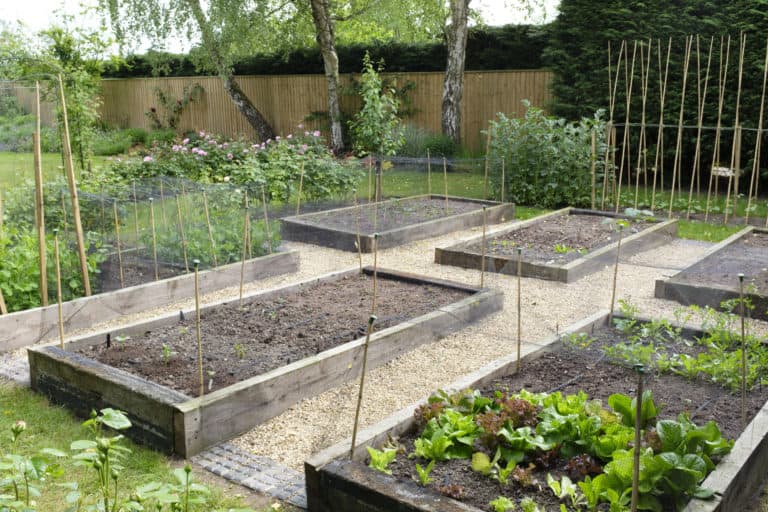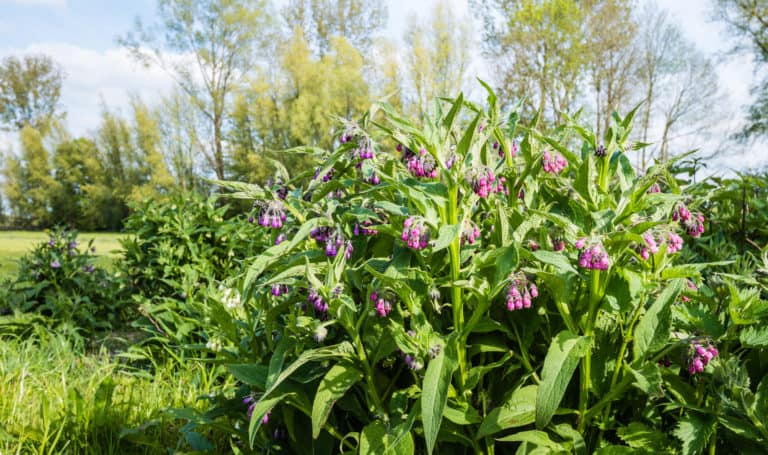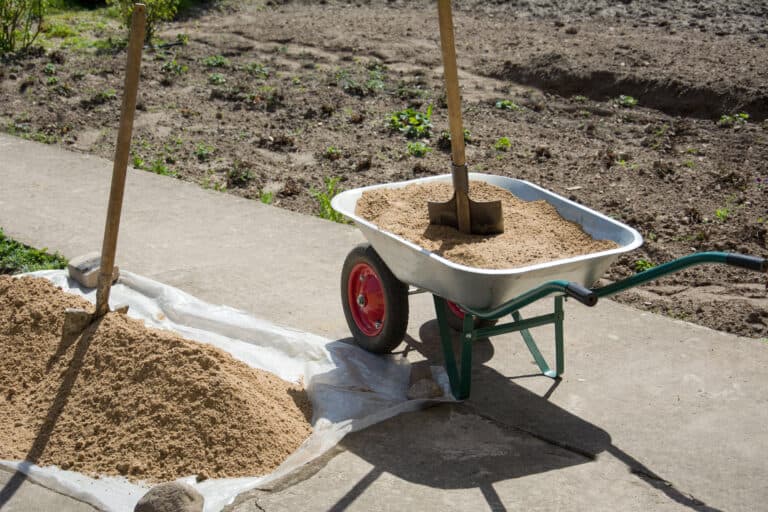
Mycorrhizae (plural for mycorrhizal fungi) are ubiquitous in garden soils. People often see the long thread-like filaments entangling flowers and vegetable roots and mistake them for plant roots. Let’s take a more detailed examination of the use and benefits of these good fungi.
Adding granular or water-soluble mycorrhizae inoculant to the soil immediately after transplanting is one of the best ways to use the fungi in your garden. You can also wait a few weeks for new seedlings to establish roots and grow leaves before adding granular or water-soluble mycorrhizae.
Mycorrhizal, what the heck are they?
The literal meaning of the word mycorrhizal, ‘myco’ – for fungus,’ and ‘rhiza’ – for ‘root,’ explains the interdependent relationship between mycorrhizae and almost all vascular land plant species, including your garden vegetables, flowers, and shrubs. The origins of this beneficial relationship date back nearly 400 million years. Fossil records reveal the mycorrhizal association and role in helping Aglaophyton major (the earliest land plant species) establish itself on earth.
Mycorrhizae is naturally occurring on healthy soil. And transferring a portion of healthy soil containing the fungi from a part of your garden for use in other areas is acceptable. In my experience, spreading a soil container with mycorrhizal fungi over a new planting site is sufficient. However, I have had to purchase mycorrhizae when growing in containers or soilless media.
Mycorrhizal fungi are commercially produced in various forms, including powder, granular, and concentrated (solutions) products. They are available at garden clubs, nurseries, and stores selling gardening products at prices ranging from $10 to several hundred dollars depending on the quality, type, and spore counts of fungi.
Typical applications of the fungi include:
- Vineyards
- Orchards
- Nurseries
- Commercial food production
- Organic farming
- Lawns and landscaping
- Homesteads
- Land reclamation projects
Types of mycorrhizal fungi
The two major classes of mycorrhizal are:
- Ectomycorrhizae: also called sheathing mycorrhizae, is a host-specific fungus that belongs to the Basidiomycetes fungi class. Ectomycorrhizae operates by enclosing root edges in a sheath, then produces hyphae that grow through the root extending into the soil.
- Endomycorrhizal: is a more common class of mycorrhizae. The fungi do not grow external sheaths but develop within the root cells and grow into the soil. Endomycorrhiza is not host-specific, and it belongs to the Phycomycetes fungi class, otherwise known as water molds. Examples of fungi in the endomycorrhizal class include Phytophthora and Pythium.
How mycorrhizal activity works in the garden
My observations of mycorrhizal fungi activities reveal a sophisticated web of interdependence benefiting all the parties involved. Although the vegetables and fruits growing in your garden produce their food through the process of photosynthesis, they can struggle to absorb vital nutrients such as phosphorus and nitrogen from the soil.
For this reason, plants allow mycorrhizal fungi to invade their roots. During this process, the mycorrhizae produce hyphae (white threads) better adapted to maximize nutrient (phosphorus and nitrogen) absorption. The hyphae then function as a secondary root system by extending deep into the soil beyond the root surface to absorb water and essential nutrients, sending them back to the plant. And in return, the plant provides the fungi with sugars and carbohydrates as food.
This astonishing symbiotic relationship also helps your garden to thrive in the following ways:
- It maximizes the surface area available to the plant for nutrient and water collection.
- It expands plants’ ability to access vital soul nutrients and compounds.
- Mycorrhizal activity improves the soil structure by breaking down rocks and increases nutrient availability.
How to use mycorrhizal in the garden
There are several ways to use mycorrhizal in your garden. I love mycorrhizal in its natural form because the fungi are much easier to apply than the commercial variants. You can integrate mycorrhizae into your garden ecosystem using the following methods.
- Seeding – applying granular mycorrhizal directly into the planting hole right before seeding is a common technique called seed banding. You can also mix 1 cup of mycorrhizal inoculant with a packet of seeds to establish better partnership during germination. You can apply soluble mycorrhizal by using a method known as biopriming or seed soaking.
- New seedling or transplant – you can add a teaspoon of granular mycorrhizal directly to the roots of each small seedling for effective root colonization. For soluble mycorrhizal applications, mixing the fungi with non-chlorinated water and watering the roots of individual seedlings is key to establishing good contact. For best results, apply for 10 to 14 days until the plant is well established.
- Established plants – I think the benefit of adding mycorrhizal to established plants is the most undervalued advantage of the fungi use. You can mix or mulch granular mycorrhizae into the soil around each plant base and water deeply to allow the mixture to sink.
- Soil amendment – I love combining mycorrhizae with soil blend for new plant beds to increase plant vigor. If you buy bagged soil from a store, it is vital to mix mycorrhizal directly into the compost to create healthy and beneficial fungi for plant development.
- Soil drench – drenching porous soils with soluble mycorrhizal guarantees extensive root contact. Ideal for potted garden plants, I highly recommend this method for greenhouse use.
- Soil injection – injecting compacted soils with mycorrhizae using commercial root injectors or simple DIY tools like wooden stakes allow the fungi to penetrate and help garden plants thrive in harsh soil conditions.
- Foliar – this method’s effectiveness is highly disputed. Although, I think spraying mycorrhizae is counterproductive as they are meant to colonize plant roots. This means applications that allow the fungi to contact roots directly have better success than spraying droplets around your plant base.
Benefits of mycorrhizal fungi
The symbiotic relationship between mycorrhizal fungi and plants offers several benefits for your garden vegetables, flowers, and fruits. The advantages of mycorrhizal colonization of plant roots include the following:
- Better drought resistance and increased ability to withstand environmental changes.
- Improved nutrient absorption capability due to a broader root system.
- Improved soil structure, fertility, and the availability of crucial nutrients necessary for plant growth, such as calcium, potassium, and zinc.
- Improved disease resistance as a result of well-established root systems.
- Increased seedling germination rate.
- Higher transplant survival rates.
- Healthier plant growth and increased fruit and flower yields.
- Mycorrhizal fungi protect plant roots from root attacking pests and diseases.
Tips for maintaining mycorrhizal in your garden
Although mycorrhizal fungi are beneficial to garden plants, they can be also be destroyed by routine gardening activities such as:
- Soil tilling
- Application of synthetic fertilizer
- Topsoil removal
- Soil preparation
- Pesticide application
- Soil solarization
- Excess irrigation
Other causes include:
- Erosion.
- Weed invasion.
My methods for maintaining a healthy mycorrhizal presence in my garden include:
- Engaging in minimal tilling and hoeing.
- Amending my garden soil with natural compost, including leaf mold.
- Watering the garden just long enough to make the soil moist.
- I also avoid leaving patches of my garden dormant to prevent weed infestation.
Mycorrhizal fungi can be difficult to restore in degraded soils. In gardens experiencing degradation of natural mycorrhizal fungi, inoculating your garden soil with commercial mycorrhizal can help you maintain a fertile soil and boost yields.
Conclusion
Mycorrhizal fungi is that unseen partner working silently to improve your garden’s overall health. Nurturing your soil with environmentally-friendly gardening habits can help to maintain the friendly fungi as an essential part of your garden ecosystem.






